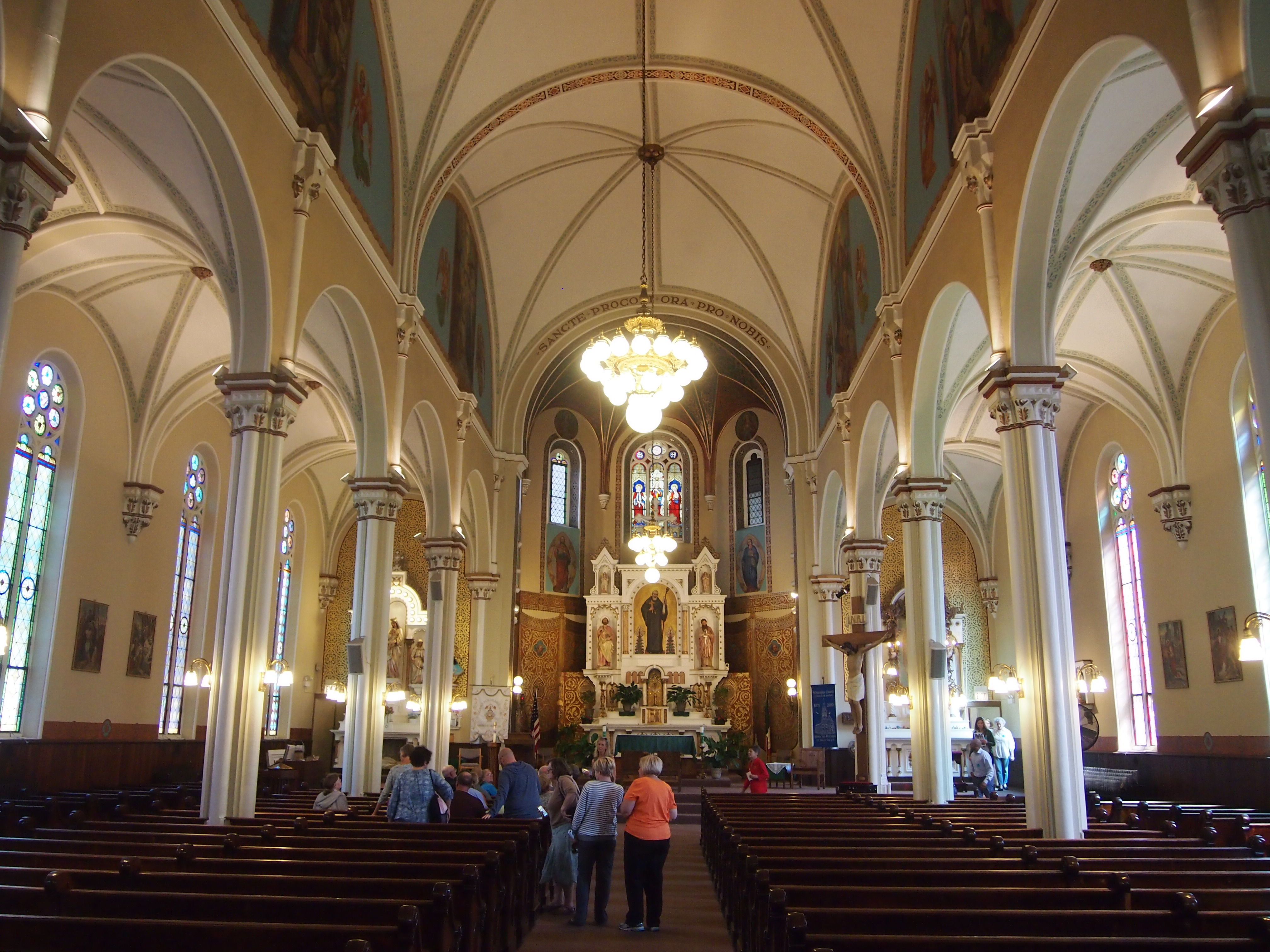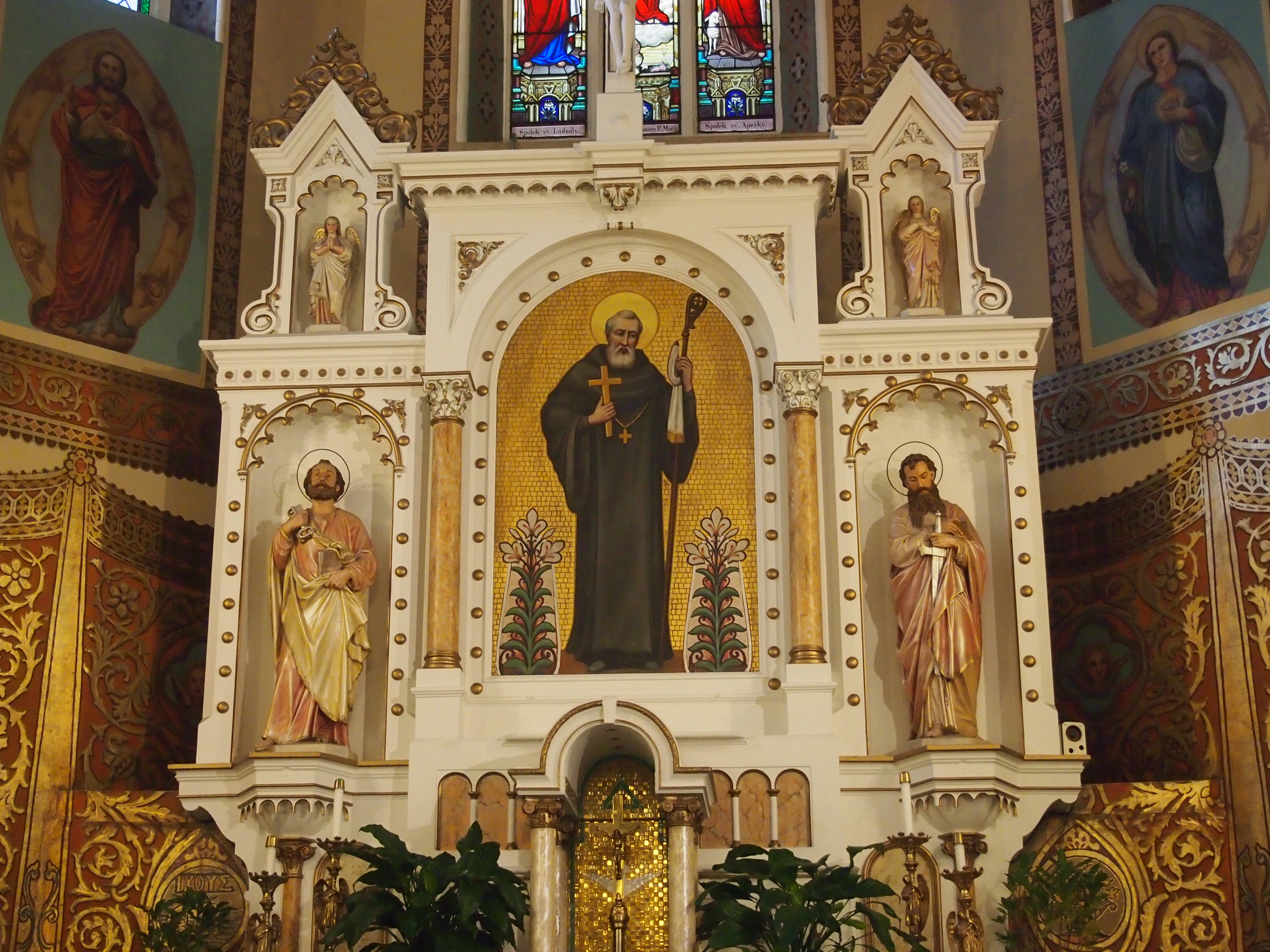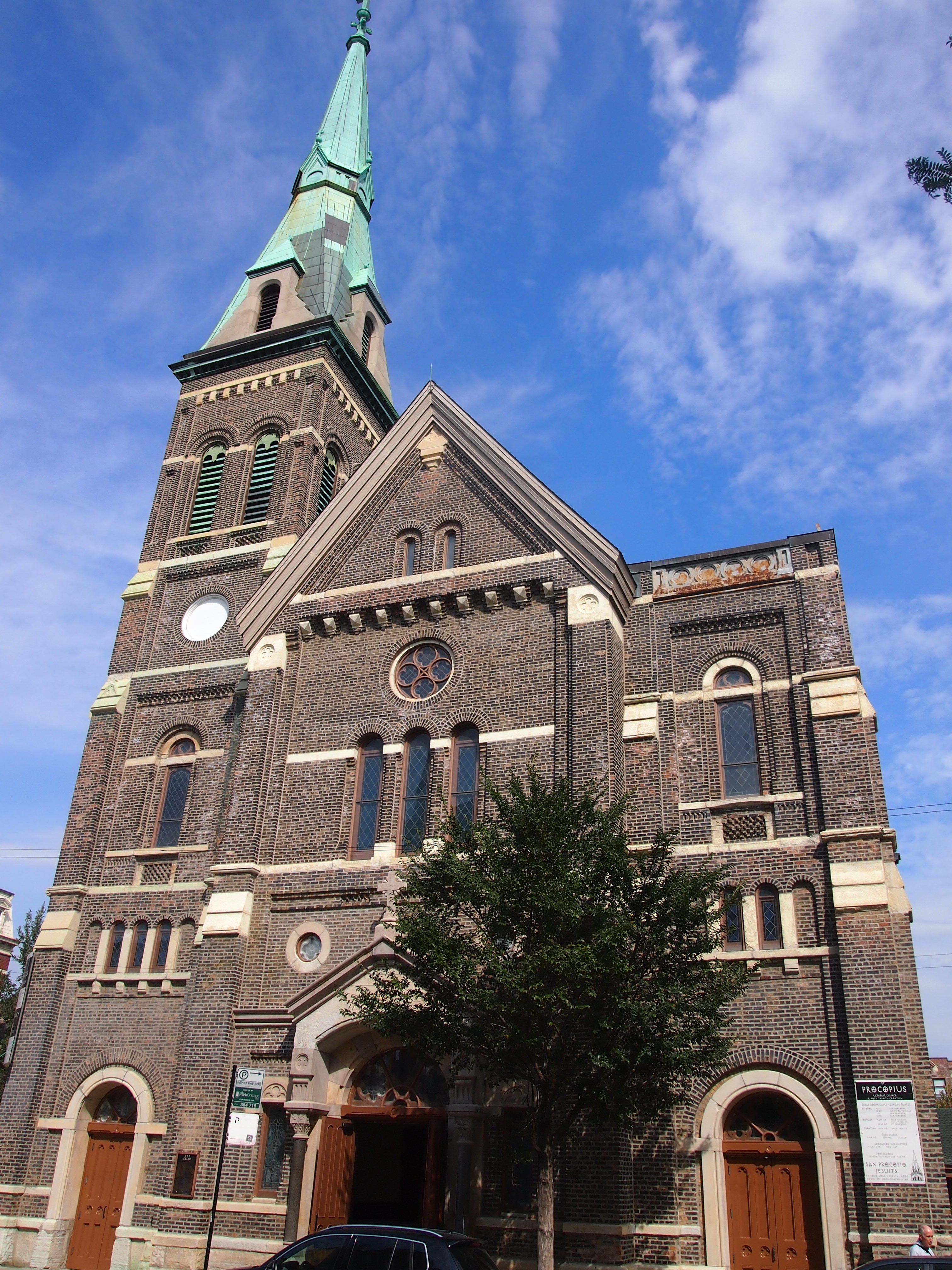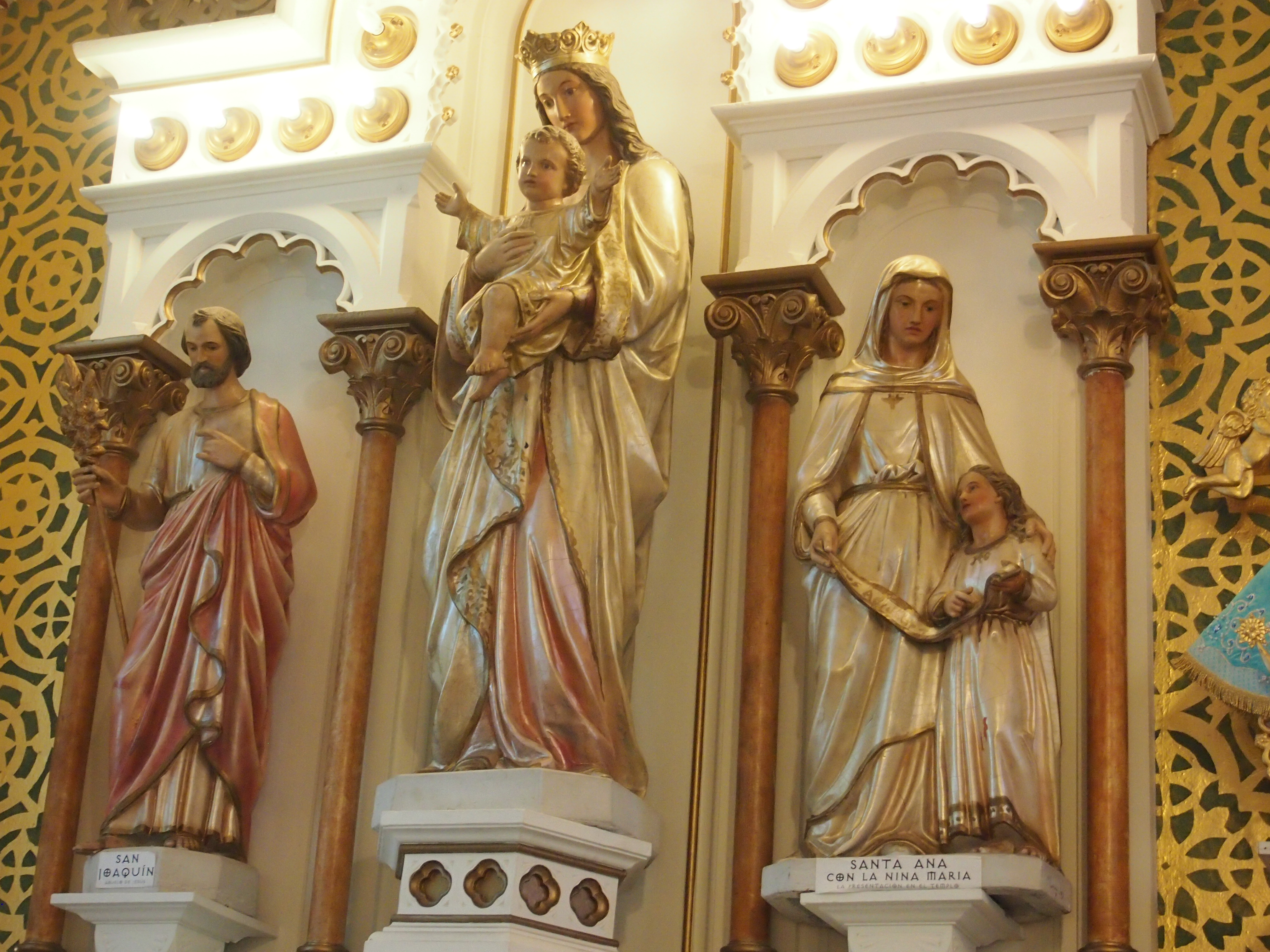During the Churches by Bus tour on Saturday, I became acquainted with a few new saints. That’s one of the things about saints, there are always more. The second church for bus #4 was St. Procopius Catholic Church at 1641 S. Allport St. in the Pilsen neighborhood.
Procopius? The Secret History Procopius? He was a saint?
No. Different fellow, separated by 500 years or so and some geography. From the web site of St. Patrick’s Church in Washington, DC: “Born in Bohemia; died March 25, 1053; canonized by Pope Innocent III in 1204; feast day formerly July 4. Procopius studied in Prague, where he was also ordained. He became a canon, was a hermit for a time, and then was founding abbot of the Basilian abbey of Sazaba in Prague.
“Procopius is one of the patrons of Czechoslovakia (Benedictines, Delaney). In art, Saint Procopius lets the devil plough for him. He may be portrayed (1) as an abbot with a book and discipline, devil at his feet; (2) with a stag (or hind) near him; (3) with SS Adelbert, Ludmilla, and Vitus (patrons of Prague); or (4) as a hermit with a skull and a girdle of leaves (Roeder).”
Pilsen, as the name strongly suggests, used to be a Bohemian neighborhood, in the ethnic sense of that term, not the hipster sense. In 1875, St. Procopius was established as the third parish for the Bohemians of Chicago, and the parish built this handsome church in the early 1880s. According to some sources, Paul Huber was the architect. Other sources say it Julius Huber. The father and son sometimes worked together, so maybe they both did, to create the Romanesque Revival structure.
Back then, the Benedictines administered the church. There was even a monastery on site that later moved to suburban Lilse and became the Abbey of St. Procopius. Now the Jesuits operate the church.
 In our time, Pilsen is a large Mexican-American neighborhood, with some bohemians in that other sense – those who can’t afford Bucktown or Wicker Park any more – filtering into the neighborhood. Or so I’ve read. My visits to the neighborhood have been scant few in recent years.
In our time, Pilsen is a large Mexican-American neighborhood, with some bohemians in that other sense – those who can’t afford Bucktown or Wicker Park any more – filtering into the neighborhood. Or so I’ve read. My visits to the neighborhood have been scant few in recent years.
Here’s Procopius, center stage. No stag or skull or leaves or even a devil, but artistic interpretations vary.
 Not far away are Mary and the infant Jesus, flanked by Joachim and Anne, with Mary as a girl. I don’t ever remember seeing this particular array before, but I don’t spend a lot of time studying religious art.
Not far away are Mary and the infant Jesus, flanked by Joachim and Anne, with Mary as a girl. I don’t ever remember seeing this particular array before, but I don’t spend a lot of time studying religious art.
In a back corner of the church stands a statue of Miguel Agustin Pro, S.J.
 The Jesuits are honoring one of their own, martyred by the anti-clerical government of Mexican President Plutarco Elias Calles in 1927. Before being executed by firing squad, Pro put his arms up and cried out, “Viva Cristo Rey!” Newspapers published a picture of him in that position, and so he stands in a church far to the north.
The Jesuits are honoring one of their own, martyred by the anti-clerical government of Mexican President Plutarco Elias Calles in 1927. Before being executed by firing squad, Pro put his arms up and cried out, “Viva Cristo Rey!” Newspapers published a picture of him in that position, and so he stands in a church far to the north.
The church is also a shrine of the Virgin of San Juan de los Lagos. A sign in Spanish and English on the outside of the building, near the entrance, says so. (The nearby cornerstone says: “AD SANCTUM PROCOPIUM C Missio Haec Fundata Est A.D. 1875 Hic Lapis Angularis Positus Est 23 Julii 1882.”) If you can’t make it to the shrine of that name in central Mexico, coming here counts, and apparently people do in droves.

